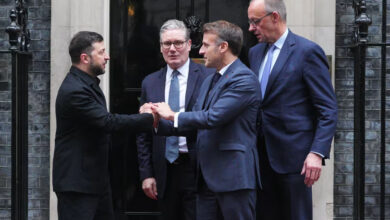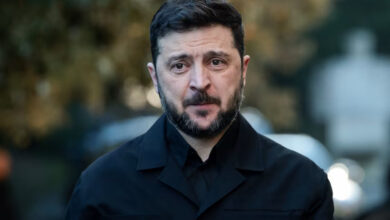
Iran has denied supplying Russia with weapons for use in Ukraine, saying it “has not and will not” do so.
The denial, reportedly made in a phone call between Iran’s Foreign Minister and his Portuguese counterpart on Friday, follows claims by Kyiv and US intelligence that Russia is using Iranian-made “kamikaze drones” in its attacks on Ukrainian territory.
The Iranian government said its Foreign Minister Hossein Amir-Abdollahian emphasized in the call “once again” that Tehran “has not and will not” provide any weapon to be used in the Ukraine war.
“We believe that the arming of each side of the crisis will prolong the war, so we have not considered and do not consider war to be the right way either in Ukraine, Afghanistan, Syria or Yemen,” Amir-Abdollahian said, according to an Iranian readout of the call.

The Portuguese government said its Foreign Minister João Gomes Cravinho had expressed concerns about the “recently reported evidence on the use of Iranian drones by the Russian Federation in Ukrainian territory” and “stressed the need for the Iranian authorities to ensure that this equipment is not supplied to Russia.”
Ukrainian authorities say Russia has used Iranian-supplied kamikaze drones in strikes against Kyiv, Vinnytsia, Odesa, Zaporizhzhia and other cities in recent weeks, and has pleaded with Western countries to step up their assistance in the face of the new challenge. The Ukrainians themselves have been using kamikaze drones to strike against Russian targets.
A key weapon
Drones have played a significant role in the conflict since Russia launched its full-scale invasion of Ukraine in late February, but their use has increased since the summer, when the United States and Kyiv say Moscow acquired the drones from Iran.
On Saturday, just hours after the call between the foreign ministers, the Ukrainian military said the city of Zaporizhzhia had been hit by four kamikaze drone strikes overnight.
Kamikaze drones, or suicide drones, are a type of aerial weapon system. They are known as a loitering munition because they are capable of waiting for some time in an area identified as a potential target and only strike once an enemy asset is identified.
They are small, portable and can be easily launched, but their main advantage is that they are hard to detect and can be fired from a distance.
The name “kamikaze” refers to the fact the drones are disposable. They are designed to hit behind the enemy lines and are destroyed in the attack – unlike the more traditional, larger and faster military drones that return home after dropping missiles.
US officials told CNN in July that Iran had begun showcasing Shahed series drones to Russia at Kashan Airfield south of Tehran the previous month. The drones are capable of carrying precision-guided missiles and have a payload of approximately 50 kilograms (110 pounds).
In August, US officials said Russia had bought these drones and was training its forces how to use them. According to Ukraine’s President Volodymyr Zelensky, Russia has ordered 2,400 Shahed-136 drones from Iran.
Protests discussed
According to Portuguese accounts of the foreign ministers’ call, the pair also discussed the protests that have been sweeping Iran since the death of Mahsa Amini, a young woman who died after being detained by morality police in September and accused of violating the country’s conservative dress code.
Amini’s death has sparked an outpouring anger over issues ranging from women’s rights and freedoms in the Islamic Republic to the continuing and crippling impacts of sanctions.
“Minister João Cravinho reiterated that the existence of Iranian legislation repressive to women’s rights is at the basis of the recent events in that country and appealed to the Iranian authorities to give a positive signal in the promotion of women’s rights,” read the Portuguese readout of the call.
Kostan Nechyporenko, Josh Pennington and Heather Chen contributed to this report




